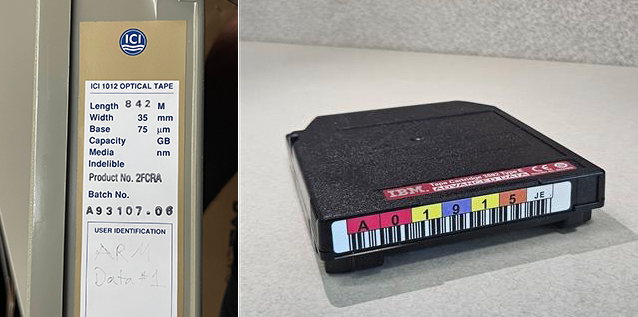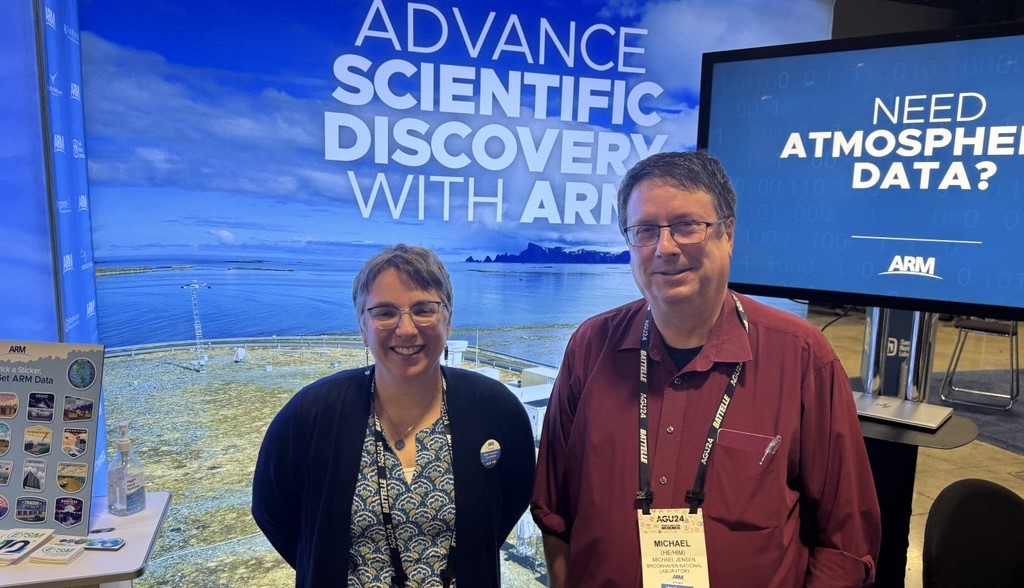From the Outgoing User Executive Committee (UEC) Chair
Published: 27 February 2025
The ARM User Executive Committee (UEC) is eager to engage with you. This is the final message from outgoing UEC Chair Jennifer “Jen” Delamere.
Farewell From Fairbanks
January 24, 2025, Fairbanks, Alaska

This morning, I sit in my home with a strong coffee beside me, darkness out the window, 31 degrees F in town, and rain in the forecast. I decide to bring the full power of internet search engines to bear. How many songs include a state name and the word “rain” in a title? At least four, maybe more. All states below 39 degrees north latitude. So I guess I won’t be learning any new tunes about Alaska and winter rain quite yet. Then I investigate what the morning temperature was 33 years ago, in 1992, in Utqiaġvik, Alaska. Around minus 30 degrees F, so presumably rain wasn’t tap-tap-tapping on the window panes!
Why am I thinking about 33 years ago? Because I have to write my last UEC blog and I am a student of history. ARM started storing data 33 years ago on 1-terabyte optical tapes with a cartridge size of about 56 centimeters. Do you know how long those tapes were? According to ARM Chief Data and Computing Officer Giri Prakash, the tapes were 842 meters long. In 2025, the new Themis data archive uses 20-terabyte tapes containing 1,270 meters of tape but in only a 13-centimeter cartridge. ARM’s data capacity is now a whopping 20,000 terabytes, or 20 petabytes.
ARM is the past, the present, and the future. This is evident in its longevity, its capabilities as a modern user facility, and its data fueling simulations of our future weather and climate. To have served as a UEC member for such a short time over ARM’s long record has been a privilege.

So now I pass the UEC chair role to the very capable Dr. Mike Jensen. Mike is a gifted scientist and euphonium player, an attendee of ARM annual meetings since 1997, and, above all else, a wonderful mentor to so many.
To the UEC members I served with for the last four years, you are now colleagues for life, and I thank you for your service to the UEC, to ARM, and to DOE.
To the 2025–2026 UEC, I encourage you to grab a coffee with one another at the ARM/Atmospheric System Research (ASR) annual meetings, sit on a bench and catch up in a hallway at the American Meteorological Society (AMS) annual meetings, or visit an ARM site if you can. You won’t regret it as our best plans were often hatched during such moments.
To Katie Dorsey, the awesome editor of my UEC blogs, your kind responses when I confess my blog is late for the 10th time have been appreciated, and your precision with grammar is impressive.
Most of all, I would like to recognize ARM Director Dr. Jim Mather for being such a great friend to me over many years, always answering my emails, providing focused advice, and making sure the 2023–2024 UEC got to visit the ARM Southern Great Plains atmospheric observatory (one of my favorite work trips ever—truth). Jim, ARM users and UEC members come and go, yet you know each of us. I don’t know how you do it, but you do. Thank you!
Before I sign off, I want to recognize a recurring challenge for the UEC, whose mission it is to liaise between the ARM user community and ARM management: getting individualized insight from the community itself. In these days when we find ourselves weary from Zoom meetings or too busy writing proposals, stopping to think about what works and what could work better from a steadfast facility like ARM isn’t always on the top of our priority list. Yet, one of the things that makes ARM great is that your voice is heard, and taking the time as a community member to share even the smallest success or annoyance will pay dividends. Last week, as ARM upgraded a number of its online services, a link on ARM Data Discovery was broken. I submitted a comment via the web, and in very short order, the data team was on it, the link repaired, and an email update sent to me. So maybe you, the community, have other examples of issues you’d like to be addressed, small or big. Your voice matters, so find a UEC member at a meeting, send an email, submit a comment, or come to a UEC event. We can’t do our jobs without you.
With that, I sign off with a \(^-^)/ and a promise to see you at the 2025 Joint ARM User Facility/ASR Principal Investigators Meeting!
Keep up with the Atmospheric Observer
Updates on ARM news, events, and opportunities delivered to your inbox
ARM User Profile
ARM welcomes users from all institutions and nations. A free ARM user account is needed to access ARM data.


















